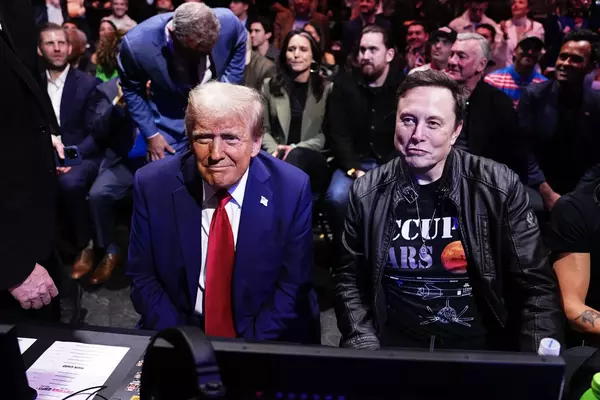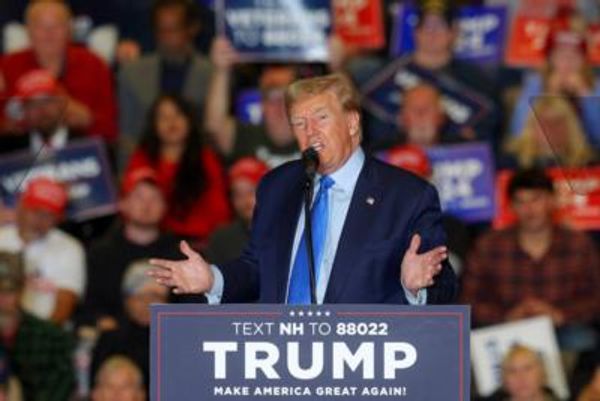
As it draws to an ignominious close, the long war in Afghanistan stands as a stunning indictment of the U.S. foreign-policy establishment. The war was waged by two Republican presidents and one Democrat—George W. Bush, Barack Obama, and Donald Trump—and none of them managed to win or end it. The U.S. military never devised an effective strategy for prosecuting the war and never explained to their civilian overseers why their stated war aims could not be achieved. Instead, they repeatedly offered upbeat forecasts they knew were false. Had it been left to them or other representatives of the foreign-policy Blob, we’d still be toiling on with no end in sight and no prospects for improvement.
But don’t just blame the U.S. Defense Department. It was our civilian leaders who gave the military an impossible mission and refused to take responsibility for the war’s strategic direction. Congressional leaders kept authorizing funds to keep the war going without asking tough questions about the prospects for success, even as evidence that the war was not going well began to accumulate. Diplomats, development experts, and the public at large never came to terms with the fatal contradictions in the U.S. effort and refused to accept there might be limits to what U.S. power could accomplish. Those who favored disengagement have little to be proud of either, insofar as they failed to convince the relevant officials or the broader body politic to heed their advice until now.
In the face of a collective failure of this magnitude, perhaps the only benefit one can salvage is to learn the right lessons from a bitter experience. To do so requires asking the right questions and pursuing answers to them in a candid and brutally honest fashion. In that spirit, therefore, I offer my “Top Five Questions About the United States’ Afghan War.” I’ll hazard a few conjectures about each one, and I hope they all receive sustained attention in the future. If we hope to avoid similar errors down the road, a serious effort to understand why the United States failed is essential.
- Why did the United States (and NATO) imagine they could turn Afghanistan into a modern, Western-style democracy?
The United States invaded Afghanistan in response to the Sept.11, 2001 terrorist attacks. The primary goal was to capture terrorist Osama bin Laden and as many senior al Qaeda leaders as possible. Because the Taliban government refused to turn bin Laden over, toppling them became part of the mission too. Once the Taliban were ousted and melted away, however, the United States and its allies took on the quixotic task of trying to turn a poor, deeply divided, mostly illiterate, and war-torn country into a centralized, Western-style, liberal democracy. The prospects for doing so successfully could not have been bleaker, yet the United States embraced it with a sense of hubris that now seems breathtaking. Whatever noble intentions it may have had, this ambitious effort at social engineering in a country Americans barely understood was doomed to fail. Why didn’t the United States understand this from the start?
- Why did the Taliban consistently out-fight the Afghan National Security Forces?
On paper, the Afghan government’s security forces should have been stronger than their opponents. They are nominally larger and better equipped than the Taliban, and they received massive amounts of external military training, logistical support, sophisticated weaponry, and intelligence information. They were also backed up by thousands of U.S. troops, armed drones, and extensive combat air support. Yet after nearly two decades of sustained training and other forms of assistance, the Afghan forces remain poorly led, vulnerable to corruption and frequent desertions, and are sometimes the source of lethal “green-on-blue” attacks on their U.S. advisors. With rare exceptions, they have been no match for their numerically smaller and less well-armed foes. But why?
The failure of U.S. efforts to create effective Afghan security forces is a key story in the war, yet it is frequently omitted from reportage and commentary about the fighting. One can think of a number of explanations for this puzzle: 1) U.S. advisors were trying to teach the Afghans to fight like highly skilled, technology-dependent Americans, a mode of warfare which most Afghans were ill-suited for; 2) pouring vast resources into the Afghan military encouraged corruption and opportunism instead of military competence; 3) U.S. officials could not get the Afghan government to undertake meaningful reforms because their only leverage was to threaten to leave, and the Afghans knew this threat was a bluff; or 4) the Afghan security forces were unpopular due to their association with a foreign occupier (the United States) and the terminally corrupt and mostly despised government in Kabul. I don’t know which of these (or other) explanations is correct, but I would like to know why the United States’ well-armed local allies couldn’t beat their nominally weaker opponents.
- Why didn’t the United States reevaluate the true threat of terrorism?
Afghanistan was the first battleground in the so-called Global War on Terror, and preventing another 9/11 remained a key rationale from the start. As the war dragged on, U.S. leaders continued to justify it by saying they had to prevent Afghanistan from again becoming a “safe haven” from which anti-U.S. terrorists could plot equally damaging attacks. This was the main reason Obama gave when he ordered a “surge” of additional U.S. troops in 2009, and Trump said much the same thing when he ordered a more limited surge in 2017. These arguments were never very convincing, however, because by then, al Qaeda had many other havens from which to operate and the Taliban were never interested in attacking the U.S. homeland directly.
More importantly, the years since 2001 have shown that al Qaeda is simply not the existential threat Americans once feared they might be. With the passage of time, the Sept. 11 attacks were more accurately seen as a rare instance when al Qaeda got extremely lucky and not the harbinger of a fearsome new wave of danger. The billions of dollars invested in homeland security made the United States a much harder target, and al Qaeda’s ability to conduct large-scale attacks turned out to be less fearsome than initially thought, especially when compared to other threats (including homegrown right-wing extremism). Yet U.S. officials never adjusted their thinking to reflect the actual level of danger or asked themselves if the benefits of denying a potential “safe haven” in Afghanistan were worth the considerable costs.
- Could the war have been won?
Now that the war has been lost, it is impossible to know for certain whether a different approach might have succeeded. But the question should still be asked, if only to determine whether victory was always unlikely or whether there were plausible alternatives that might have had a reasonable chance of success. What if the George W. Bush administration had not taken its eye off the ball in 2003 when it chose to invade Iraq and had focused instead on finishing the job in Afghanistan? Perhaps that would have given the fledgling Afghan government, led by then-President Hamid Karzai, sufficient time to get its act together before the Taliban reemerged from their sanctuaries in Pakistan. What if U.S. officials had pushed for an Afghan governing structure that gave greater autonomy to regional governments and power centers—instead of trying to build a centralized government in Kabul—and didn’t try to transform key features of Afghan society as rapidly as possible? What if the United States had started a broad process of negotiation and regional engagement while it still held the upper hand instead of waiting until its fortunes and leverage were declining? And so forth.
My own view, for what it is worth, is trying to turn Afghanistan into a liberal democracy was always an impossible dream. Not only do “foreign-imposed regime changes” rarely produce democratic results (and especially not in societies with characteristics like contemporary Afghanistan), but the entire effort was rife with contradictions from the start. The more rapidly the United States tried to transform Afghan society, culture, and politics, the more local resistance it was going to face. The more it tried to minimize its own casualties by using airpower, the more accidental civilian deaths it would cause and the more unpopular the United States and its local partners would become. Having created a governmental structure that Afghanistan’s economy could not support, the billions of dollars of external aid and development assistance its state-building effort required did more to fuel corruption than to create more effective institutions or economic infrastructure. Because the war and development effort depended on transport routes through Pakistan, it was impossible to force the Pakistani government to cease its covert support for the Taliban. Even a combination of military strategists Napoleon Bonaparte, Carl von Clausewitz, George S. Patton, and Sun Tzu would have found it impossible to devise a coherent strategy in the face of these contradictions.
Moreover, the American people would only support a level of effort and a casualty rate that was sufficient to keep the war going but enough not to win it—in good part because the public recognized the stakes were not really that large. So the United States became the latest victim of the “graveyard of empires,” just as Britain had in the 19th century and the former Soviet Union had during the 1980s. What is more surprising is it convinced itself it might succeed where others had failed.
- Why did the war last so long?
One could sum up all the above questions with another question: Given all the reasons why the United States should have left long ago, why did it take so long for a president to draw the obvious conclusion and find the political will to get out? One reason is the United States’ still vast wealth and unmatched military power, which made it possible to keep going even when it no longer made much sense. A second reason is all the mechanisms the national security establishment devised to conceal the true cost of these adventures: reliance on opaque overseas contingency funds, unmanned drones, airpower, private contractors, and, of course, the All-Volunteer Force. Had the United States been fighting in Afghanistan with draftees drawn from all parts of U.S. society, it would have ended years ago. Partisan politics played a role too: Even if getting out was the smart thing to do, any president had to worry that doing so would invite a chorus of denunciations from his opponents (even when they had no idea how to win the war themselves). Add the usual deceptions and the Blob’s natural reluctance to question orthodoxies or reverse course, and you get the latest version of military analyst Daniel Ellsberg’s Vietnam-era “stalemate machine.” Instead of ending a war they knew they couldn’t win, presidents and their advisors focused on “not losing” and on passing the buck to their successors.
To his credit, U.S. President Joe Biden chose a different course. But we, scholars, still have the responsibility of studying why his two predecessors failed to end the war, especially given that Obama and Trump clearly wanted to get out from the start. And had they done so, the results would have been no different than what we are going to see now. Understanding why it was so hard to end this war could teach future presidents two valuable lessons: It is usually easier to invade a foreign country than it is to leave it, and wars of choice should never be waged for frivolous or ill-considered reasons.
The end of U.S. involvement in the Afghan war is no cause for celebration. Conditions in Afghanistan are going to get worse, although that was likely to happen whenever the United States chose to leave. There will be a new round of blame-casting and partisan finger-pointing, which is hardly what the country needs right now. What the United States needs instead is to recognize there is plenty of blame to go around and to explore why the foreign-policy elite took on a misguided mission and pursued it much longer than was warranted.
The United States’ foreign-policy establishment did not serve the country well during this long war. It will be doubly tragic if its members are unwilling to ask the right questions about the unhappy episode, refuse to acknowledge their many errors, and try to pin the blame on those who had the good sense to withdraw. As always, failure to hold themselves accountable and learn the right lessons will only make a repeat performance more likely.







